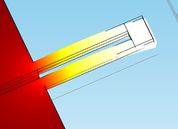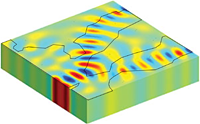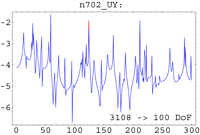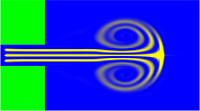Theory and Simulation for Design
Advanced microsystems research requires novel design tools that rationalize the prediction of manufacturing, device operation, and systems function.
At IMT we develop dedicated design level simulation tools based on a variety of discretization methods, including continuum and particle methods. We are particularly interested in topology optimization methods for device simulation, model order reduction for system simulation, novel techniques to predict transport processes, and complex multiphysical properties at the interface of computational materials science and device engineering at various length scales.
We strongly tie simulation tool development to experimental characterisation. The tools target application areas currently of interest in IMT, and hence aim to underscore and link a variety of experimental research areas, including photonics, teratronics, nuclear magnetic resonance, smart materials and devices, and biology.

Smart devices are described by electrical, thermal, mechanical and magnetic processes and are calculated in space and time. Often, the physical processes are coupled, requiring self-consistent multiphysics simulation. At IMT we develop methods to bring simulation models in line with real behaviour, and to capture coupling effects with sufficient accuracy.

Topology optimization is an inverse design method. An important ingredient is the “forward” solver, a finite element multiphysics program. Joining a solver with the optimization goal, and adding realistic constraits for function manufacturability, yields a procedure to predict the best topology of novel devices. At IMT we have methods to apply this concept to many different sensor and actuator principles.

Which is the smallest correct model of a physical system? Finite element models of dynamic phenomena stand, in contrast to compact “Spice-like” models, often yield large equation systems. At IMT we develop methods to achieve dramatic compactions (e.g. 1’000’000 to only 10 equations) for these models, resulting in vastly more efficient computation of complex system behaviour.

Fluids can be discretized using particles, via dissipative particle dynamics (DPD), smoothed particle hydrodynamics (SPH), and the lattice Boltzmann method (LBM). Particles simplify the description of fluid-structure interactions, and the addition of co-convecting fields. At IMT we develop these methods further, and apply this to nuclear magnetic resonance phenomena coupled to diffusion or flow.

